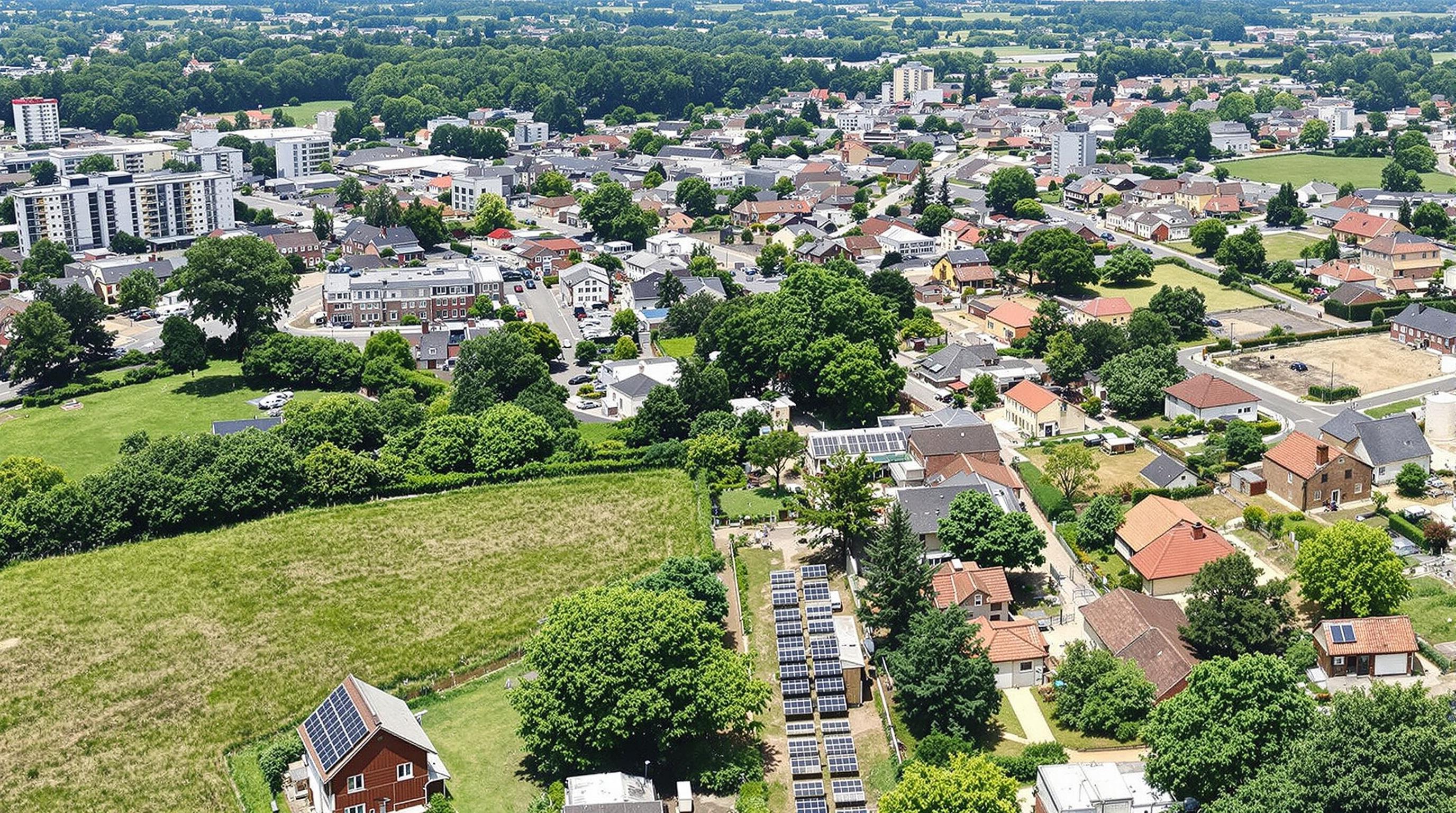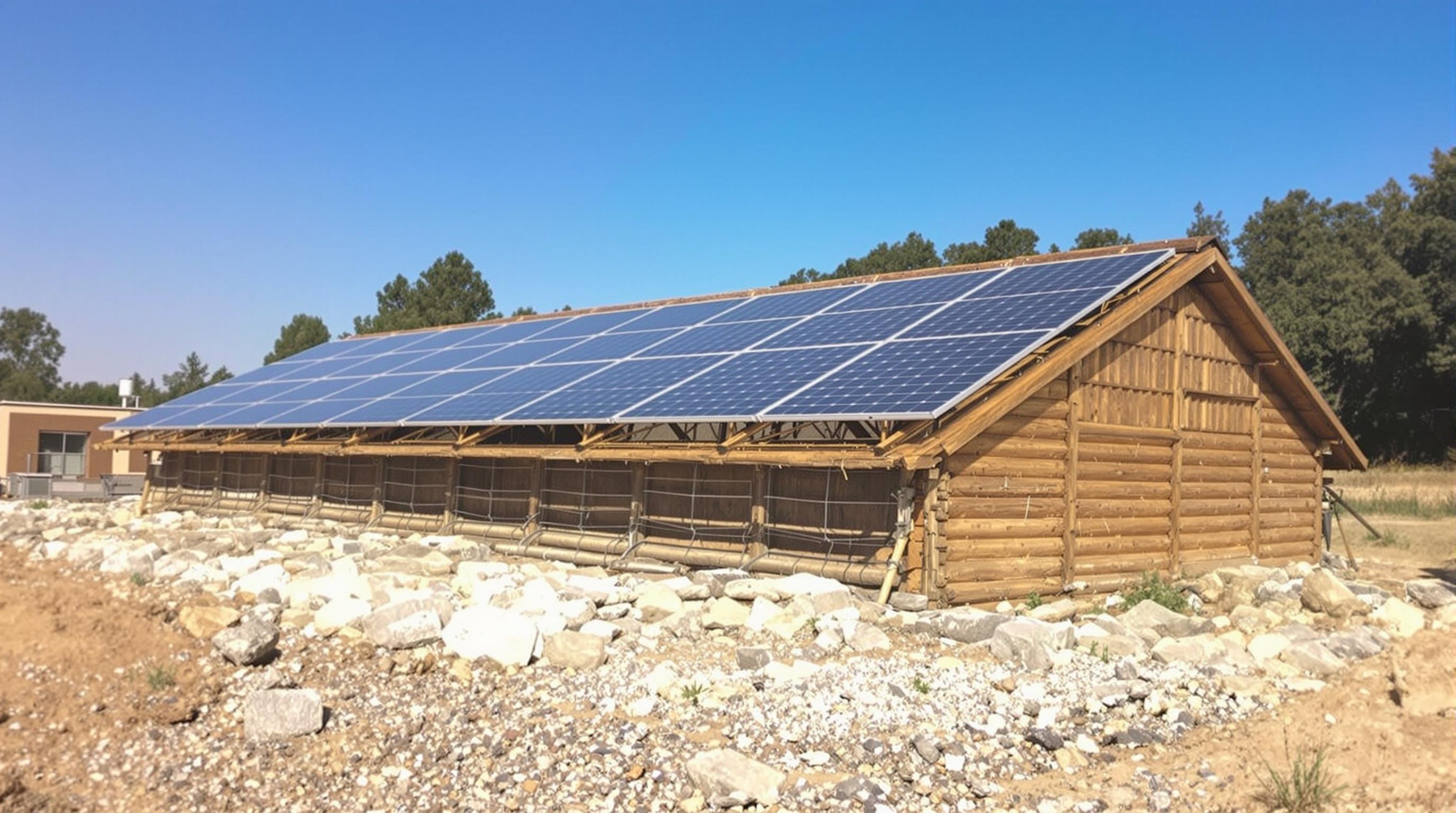Related Articles
- 6 Revolutionary Solar Panel Cleaning Robots Since 2019 Rated for Efficiency and Contractor Appeal
- How Unexpected Weather Patterns Are Shaping Homeowner Choices in Solar Installation Partnerships
- How Solar Inverter Noise Pollution Affects Urban Wildlife and What Manufacturers Are Overlooking
- How Solar Inverters Influence Home Resale Value and What Buyers Rarely Consider Before Purchase
- How Microclimates Secretly Shape Solar Energy Output in Unexpected Urban and Rural Landscapes
- The Quiet Role of Microclimates in Shaping Solar Harvesting Outcomes Beyond Conventional Efficiency Measures
10 Emerging Tech Trends Revolutionizing Solar Panel Energy Conversion Beyond Traditional Efficiency Measures
10 Emerging Tech Trends Revolutionizing Solar Panel Energy Conversion Beyond Traditional Efficiency Measures
10 Emerging Tech Trends Revolutionizing Solar Panel Energy Conversion Beyond Traditional Efficiency Measures
1. Perovskite Solar Cells
Perovskite solar cells represent a groundbreaking advancement in photovoltaic technology, characterized by their unique crystal structure that allows efficient light absorption. Unlike traditional silicon-based cells, perovskites can be fabricated using low-cost materials and simpler processes. This contributes not only to reducing production costs but also to enabling flexible and lightweight solar panels.
Research shows that perovskite solar cells have rapidly increased their power conversion efficiency from 3.8% in 2009 to over 25% in recent years, rivaling traditional silicon technology (National Renewable Energy Laboratory, 2023). Their tunable bandgap also enables tandem solar cells, which stack layers to capture more of the solar spectrum.
Beyond efficiency, their adaptability allows integration into windows or curved surfaces, expanding the possibilities for solar energy utilization in urban environments. Challenges remain regarding their environmental stability, but continuous innovation is addressing these issues.
2. Bifacial Solar Panels
Bifacial solar panels harness sunlight from both their front and rear sides, effectively boosting energy output without increasing the footprint. This technology leverages reflected and scattered sunlight from the ground and surroundings, enhancing overall energy yield.
Studies indicate that bifacial panels can improve energy generation by 10% to 30%, depending on installation conditions like albedo and tilt angle (International Renewable Energy Agency, 2022). Their semi-transparent backsheet design allows ground-reflected light to reach the rear side, a feature absent in conventional panels.
Moreover, bifacial modules generally have improved durability due to their glass-to-glass encapsulation, increasing their lifespan and lowering levelized cost of electricity. They are increasingly adopted in large-scale solar farms and building-integrated photovoltaics.
3. Quantum Dot Solar Cells
Quantum dot solar cells utilize nanoscale semiconductor particles to create tunable photovoltaic materials with unique optical properties. Their size-dependent bandgap allows absorbing specific wavelengths of sunlight, thus enhancing spectral conversion and potentially surpassing Shockley-Queisser efficiency limits.
These cells also promise cost-effective manufacturing through colloidal synthesis and printing techniques, potentially enabling flexible and lightweight modules. Quantum dots can be incorporated into multi-junction devices that capture a wider range of light frequencies.
While still largely in research phases, advancements in stability and toxicity mitigation are progressing. According to a 2023 report by the Journal of Photovoltaic Science, quantum dot solar cells could unlock new frontiers for solar conversion efficiency beyond silicon-based restrictions.
4. Tandem Solar Cell Architectures
Tandem solar cells combine multiple photovoltaic materials stacked in layers to capture different portions of the solar spectrum simultaneously. The approach boosts conversion efficiency by utilizing high-bandgap materials to absorb high-energy photons and low-bandgap materials for low-energy photons.
Integrating perovskite layers atop silicon cells is a prominent example, combining the durability of silicon with the high efficiency of perovskites. This hybrid can exceed 30% efficiency, surpassing traditional single-junction silicon panels.
The fabrication techniques for tandem cells are becoming more refined, addressing issues of interlayer recombination and material compatibility. These architectures offer a promising route to capitalize on existing infrastructure while dramatically improving performance.
5. Artificial Photosynthesis-Inspired Systems
Inspired by natural photosynthesis, emerging solar technologies aim to convert sunlight directly into chemical fuels, such as hydrogen, using photoelectrochemical cells. This approach extends solar energy conversion beyond electricity to versatile and storable fuels.
Research groups worldwide are developing catalysts and electrode designs to improve efficiency and stability in water-splitting reactions. These systems mimic chlorophyll's light-harvesting mechanisms to optimize energy capture and conversion.
By integrating solar panels with artificial photosynthesis modules, energy storage challenges inherent to solar power can be alleviated. According to a 2024 review in Energy & Environmental Science, this approach could revolutionize sustainable fuel production.
6. Transparent Solar Panels
Transparent solar panels enable windows and surfaces to generate electricity while preserving the view and natural light transmission. Utilizing organic photovoltaics or perovskite materials with selective absorption, these panels transform buildings into power generators without compromising aesthetics.
The technology targets building-integrated photovoltaics, contributing to energy self-sufficiency in urban environments. Efficiencies are lower compared to opaque panels but are continuously improving as material science advances.
Growing demand has spurred commercial development, with companies introducing semi-transparent modules suitable for facades and skylights. This paradigm shifts the perception of solar energy from bulky installations to elegant, multifunctional architectural elements.
7. Solar Tracking Systems Enhanced by AI
Solar tracking systems optimize panel orientation to follow the sun’s path, significantly increasing energy capture. When combined with artificial intelligence, these systems learn environmental patterns and adjust movements dynamically for maximal efficiency.
AI-driven analytics predict weather changes, cloud cover, and seasonal variations, adapting tracking algorithms in real time. This reduces energy losses from suboptimal angles and increases overall system reliability.
Recent deployments in utility-scale solar farms have demonstrated 15% to 25% energy yield improvements. The integration of Internet of Things (IoT) devices enhances monitoring and automated maintenance, accelerating the transition to intelligent solar infrastructure.
8. Photonic Nanostructures for Light Management
Photonic nanostructures manipulate light at the nanoscale to improve absorption and reduce reflection losses in solar cells. These include nano-textured surfaces, plasmonic nanoparticles, and photonic crystals that trap and concentrate sunlight within active layers.
Applying these structures can increase the path length of photons in the material, enabling thinner and lighter solar cells without sacrificing efficiency. This technique also addresses issues with diffuse light harvesting, enhancing performance in varied lighting conditions.
Materials scientists continue to refine fabrication methods such as nanoimprint lithography and self-assembly. The merging of nanotechnology with photovoltaics heralds a new era of smart solar panels with enhanced spectral and angular absorption capabilities.
9. Energy Storage Integrated Solar Modules
Integrating energy storage technologies directly within solar panels is an emerging trend that addresses intermittency issues. Hybrid modules incorporate batteries or supercapacitors to store excess energy, smoothing supply fluctuations and enabling immediate power availability.
This integrated approach reduces installation complexity and footprint compared to separate storage units. It allows residential and commercial users to optimize self-consumption and gain resilience against grid outages.
Advances in solid-state batteries and flow batteries compatible with photovoltaic systems are driving this innovation. According to industry reports, these hybrid solar-storage modules will become increasingly mainstream by 2025.
10. Flexible and Wearable Solar Technologies
Flexible solar panels made from thin-film materials such as organic photovoltaics and perovskites open new applications in portable and wearable electronics. Their lightweight and bendable properties enable seamless integration into clothing, backpacks, and other everyday items.
This expanding market addresses the growing demand for sustainable energy on the move, powering devices from smartphones to medical sensors. Flexibility also facilitates unconventional installations on curved and irregular surfaces.
Material durability and lifetime under mechanical stress remain challenges; however, ongoing research and commercial prototypes demonstrate promising progress. This trend exemplifies how solar technology is transcending traditional static installations.




